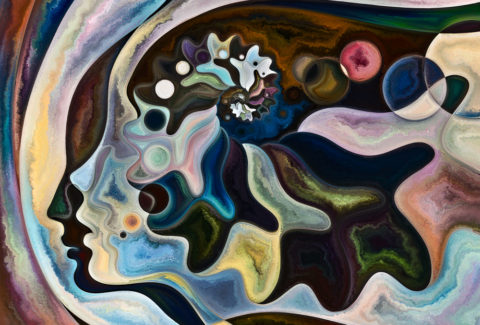The Art and Science of Dream Analysis
Introduction:
Dreams have long captivated the human imagination, serving as windows into the mysterious realm of the subconscious mind. From ancient civilizations to modern psychologists, the interpretation of dreams has held a fascination for humanity, offering insights into our deepest desires, fears, and aspirations[1]. In this article, we explore the art and science of dream analysis, shedding light on its significance, methods, and implications for understanding the human psyche.
The Significance of Dream Analysis:
Dreams are a natural and universal phenomenon, occurring during the rapid eye movement (REM) stage of sleep.[2] While dreams may seem like fantastical narratives or random imagery, they often contain symbolic representations of our innermost thoughts, emotions, and experiences. Dream analysis holds significance as a tool for uncovering unconscious material, resolving inner conflicts, and gaining insight into the deeper layers of the psyche. By exploring the symbols, themes, and emotions present in dreams, individuals can uncover hidden meanings and patterns that may hold valuable clues to their waking life experiences.[3]
Methods of Dream Analysis:
Dream analysis encompasses a variety of methods and techniques for interpreting the content and symbolism of dreams. One approach involves keeping a dream journal, where individuals record their dreams immediately upon waking to capture details and emotions while they are still fresh in memory.[4] Another method involves exploring the symbolism[5] and archetypes present in dreams, drawing upon cultural, mythological, and personal associations to uncover deeper meanings. Psychodynamic therapists may employ techniques such as free association[6] and amplification to delve into the unconscious content of dreams, while cognitive-behavioral therapists may focus on identifying and challenging maladaptive patterns or beliefs reflected in dreams. Regardless of the method employed, the goal of dream analysis is to unlock the latent meanings and insights contained within the dream imagery.[7]
Implications for Self-Discovery and Growth:
Dream analysis holds profound implications for self-discovery, personal growth, and emotional healing.[8] By engaging in the process of exploring and interpreting their dreams, individuals gain access to unconscious material that may be influencing their thoughts, behaviors, and relationships in subtle ways. Dreams can serve as mirrors of the psyche, reflecting unresolved conflicts, unmet needs, and hidden desires that may be impacting one’s waking life experiences. Through the process of dream analysis, individuals have the opportunity to gain insight into their innermost selves, confront buried emotions, and work towards resolution and integration of unconscious material.[9] In this way, dream analysis becomes a powerful tool for fostering self-awareness, emotional healing, and personal transformation.
Conclusion:
Dream analysis offers a fascinating journey into the depths of the human psyche, revealing hidden truths and insights that may elude conscious awareness. By exploring the symbols, themes, and emotions present in dreams, individuals can unlock the wisdom of their subconscious mind, gaining valuable insights into their innermost thoughts, feelings, and experiences. Whether used for personal exploration, therapeutic intervention, or spiritual inquiry, dream analysis holds the potential to illuminate the path to self-discovery, healing, and growth. As we embrace the mysteries of the subconscious and delve into the rich tapestry of our dreams, we embark on a journey of exploration and transformation, guided by the wisdom of the unconscious mind.
Are you interested in delving deeper into Psychodynamic Psychotherapy? If so, discover whether our upcoming 6-week Psychodynamic Psychotherapy Certificate Course, commencing on May 7, 2024, is the right fit for you. Click here to learn more.
[1] Whitmont, Edward C., and Sylvia Brinton Perera. Dreams, a portal to the source. Routledge, 2013.
[2] Blagrove, Mark, et al. “Insight from the consideration of REM dreams, non-REM dreams, and daydreams.” Psychology of Consciousness: Theory, Research, and Practice 6.2 (2019): 138.
[3] Sharpe, Ella Freeman. Dream analysis: A practical handbook of psychoanalysis. Routledge, 2018.
[4] Vande Kemp, Hendrika. “Dream Journals, Questionnaires, Interviews, and Observations: Precursors to the Twentieth-Century Content Analysis of Dreams.” Histories of Dreams and Dreaming: An Interdisciplinary Perspective (2019): 33-61.
[5] Lim, Hyun-Woo. “The Symbolic Meaning of the Dog in the Dream Analysis: From the Viewpoint of Jung Psychology.” The Journal of the Korea Contents Association 20.2 (2020): 522-533.
[6] Novac, Andrei, and Barton J. Blinder. “Free association in psychoanalysis and its links to neuroscience contributions.” Neuropsychoanalysis 23.2 (2021): 55-81.
[7] Sparrow, Gregory Scott. “A new method of dream analysis congruent with contemporary counseling approaches.” International Journal of Dream Research 6.1 (2013): 45-53.
[8] Clarke, Martha. The Big Dictionary of Dreams: The Ultimate Resource for Interpreting Your Dreams. Simon and Schuster, 2015.
[9] March-Smith, Rose. Dreams: Unlock Inner Wisdom, Discover Meaning, and Refocus Your Life. Penguin, 2019.









